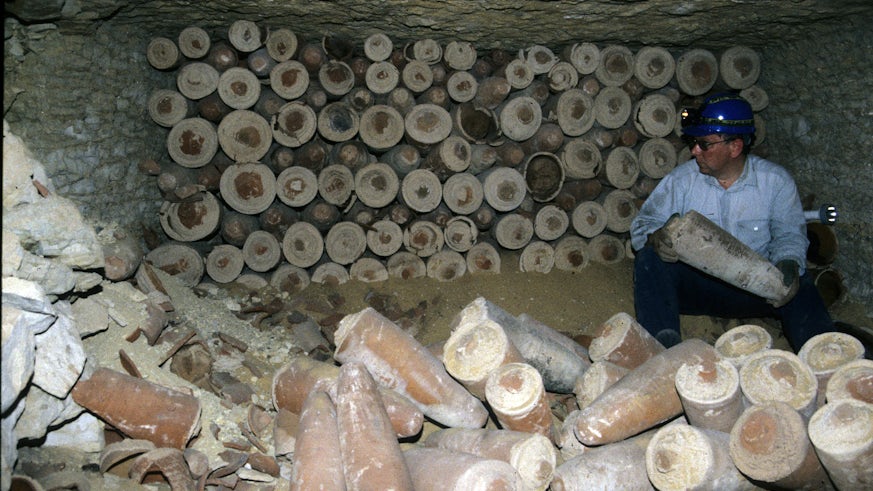Dating the Dead
16 January 2023

Revolutionising the chronology and context at Saqqara’s Sacred Animal Necropolis
Despite being a source of fascination for over two millennia, the functioning of ancient Egypt’s animal cults remains poorly understood, not least because the various animal catacombs, their mummies and other objects have not previously been examined as a whole.
Led by Professor of Archaeology Paul Nicholson, Dating the Dead aims to provide a comprehensive chronology for the animal cults with its focus on the key site of Saqqara, transforming our understanding of their development as well as providing a methodology which can be applied to other animal cemeteries.
Unlike other sites centred on the cult of a single animal deity, Saqqara stands out for its multiple catacombs filled with mummified bulls, cows, ibises, falcons, baboons, dogs and cats, deposited underground in their thousands. Textual sources suggest that the burial places of still more species are yet to be discovered.
Saqqara’s cults – and their votive animal mummies - are usually said to be most important from the Late Period (747-332 BC) declining shortly after the end of the Ptolemaic era (332-30 BC) and still further from the Roman period (30 BC onwards).However, research led by Professor Nicholson suggests that this conventional picture may in fact be somewhat misleading, with cults flourishing later, and lasting far longer than previously believed.
Dating the Dead aims to establish this chronology to create a clearer, evidence-based picture by integrating the chronological evidence from the area known today as the Sacred Animal Necropolis, alongside targeted radiocarbon dating and statistical analysis to develop the first detailed and reliable chronology for the animal cults in a single project.
Building on the legacy of Professor WB Emery who rediscovered the Sacred Animal Necropolis in the 1960s and successive progression under Professors GT Martin and HS Smith along with Dr Susan Davies, Dating the Dead is setting out to build a chronology for the whole necropolis rather than individual catacombs, utilising further research at Saqqara by Professor Nicholson and his predecessors.
As well as using existing written sources the project will develop the metrical comparisons of pottery jars used as coffins for ibis and falcon mummies, identifying similarities to further establish their relative chronology thanks to research begun by the late Dr NRJ Fieller and Professor Nicholson.
Radiocarbon dating of Saqqara catacomb specimens housed in museums outside Egypt will further clarify dating, in tandem with the stratigraphic, inscriptional and metrical sources.
Drawing on 30 years of archaeological experience at Saqqara, Professor Nicholson said:
‘Our project sets out to establish a reliable, evidence-based chronology of the Sacred Animal Necropolis at Saqqara to enhance our understanding of the relationships between the catacombs and their cults and to create a more complete understanding of their role within this fascinating, complex ancient society.’
Funded by the Leverhulme Trust, Dating the Dead: Chronology and Context at Saqqara’s sacred animal necropolis is led by Professor Paul Nicholson and research associate Dr Henry Bishop-Wright who joins the project from the Middle East Department at the British Museum.
Professor Nicholson recently completed the Views of an Ancient Land project with Dr Steve Mills. His publications include The catacombs of Anubis at North Saqqara: an archaeological perspective.
